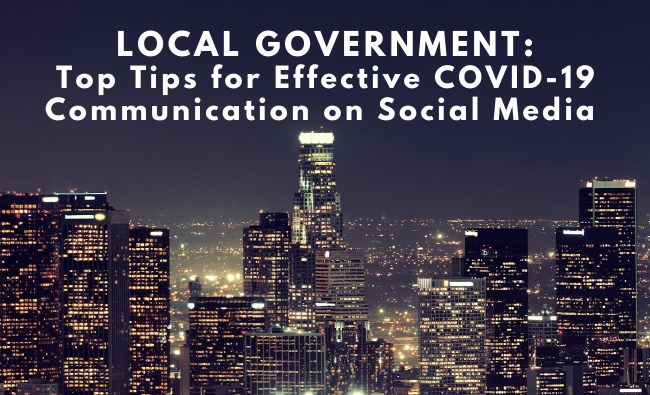COVID-19 may go down in history as the ultimate test for local government communication departments regardless if your team is a department of 1 or 10. While the need for communication has escalated, employees are working remotely, some are sick, IT systems are strained and the online misinformation battle is being tested. During this time, the significance of social media channels has been amplified. In fact, the New York Times states that we’re spending even more time on social media now — 27% more time on Facebook.com which surprisingly far exceeds the 16% increase on Netflix.
Developing compelling social media content takes time. But when time and resources are constrained, what can cities do to ensure critical coronavirus messaging cuts through the clutter and eliminates any confusion. Using the Content component of the Advantis Social Media Success Framework, we dissect recent social media posts from municipalities and the lessons learned apply to cities’ corporate channels targeting residents channels as they do for economic develop offices creating social posts for businesses. So let’s just look at two key components of some recent COVID-19-related social media posts from municipalities and understand what makes them great, or not.
Writing for Social Media
Do you read or do you scan content when you’re online? There’s a reason why the Advantis team produces so many videos — many people find reading work…or at least more work than viewing a photo or watching a GIF or video. The text on almost every social media platform, LinkedIn posts excluded, should be short and concise. Although Twitter allows a maximum of 280 characters, Tweets with the most engagement typically have only 71-100 characters (Sprout Social). And even though you’re allowed to write a short novel for a Facebook post, the posts with the most engagement have just 40 characters (Jeff Bullas). Be brief.
This Facebook post from the City of Fort Wayne is short and to the point with an image that supports the message. Enough said.
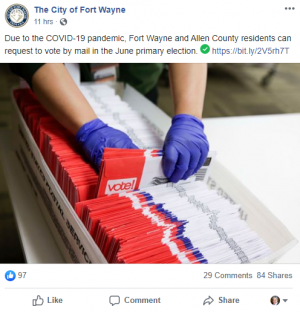
Some of you may think it’s odd that we’re highlighting a YouTube video from the City of Halifax under the “text” section, but adding supporting text below the video helps to quickly provide viewers with key information without them having to go sift through the time-coded transcript that YouTube automatically generates. It also helps with search and accessibility. We applaud the team for uploading the video of this Halifax Regional Council virtual meeting in the name of transparency, but ideally a synopsis of the meeting and a link to the meeting agenda would be helpful.
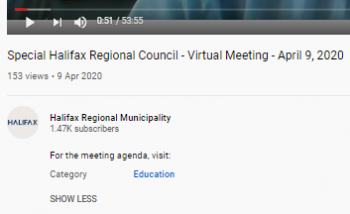
This Facebook post from the City of Philadelphia does a great job of writing short text which includes icons to make the content easily digestible. We would have rated this post highly for content creation, but although the photo is pretty, it misses the mark because it doesn’t help tell the story.
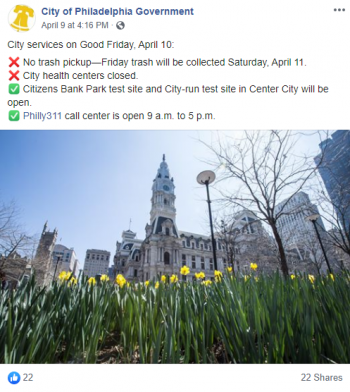
Imagery for Social Media
With 70% of all our bodies’ sensory receptors in our eyes, humans are literally built to understand visual information faster than any other communication (Merieb, E. N. & Hoehn, K. (2007). Human Anatomy & Physiology 7th Edition, Pearson International Edition). Without delving into the many lessons on how to create compelling visual content for social media, let’s simply take a look at what we can learn from some examples of imagery.
Perhaps the most fundamental lesson is to ensure images are properly sized for the specific social media channel. Yes, this is more work than simply using the same image for every social media account, but it will prevent the type of situation we see below where the actual message is cut off, significantly reducing the impact.
The City of Detroit is trying to do the right thing by helping share information over social channels, but closer attention needs to be paid to the imagery so it adds value for the resident. This specific example is especially important because it’s on Instagram where audiences expect the image to be the story.
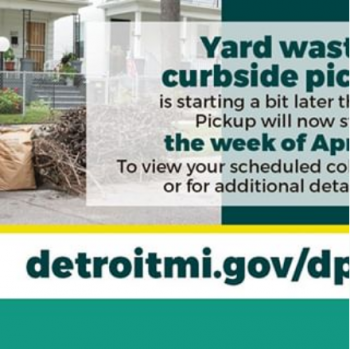
Whether the image is a photo or a poster or other collateral, it can always be appropriately resized regardless of the social media channel. The following example taken from Metro Nashville’s Twitter account could have provided an opportunity for people to directly pick-up the phone and call the number, but instead residents must click another link and hunt for the right phone number. Taking just a minute more to property size an image will make communication more effective and potentially lower 311 calls and online inquiries.
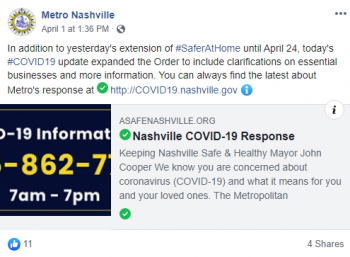
If a picture is worth a thousand words, ideally the image should be able tell at least some, if not the complete story. The four images from this City of Markham Tweet give residents very specific and easy to understand information so they don’t even have to read the text within the post to understand what actions to take.
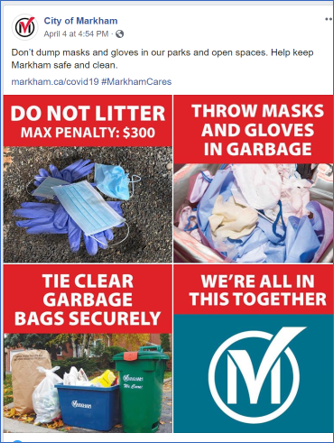
There has been a lot of confusion in Ontario as to what park amenities are open/off limits. This post from the City of Hamilton is a great example of clear, direct communication.
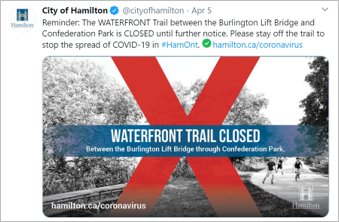
Remember…Content is Not King, Consumption Is
In this time when we should be moving quickly to disseminate the right message, content creators need to remind themselves of an important distinction. Although we often hear people repeating “Content is King” we don’t believe this is true. Communication and marketing professionals should only be creating content that enables their audiences to learn something new, trigger an emotion or motivate them into action such as encouraging them to #stayathome. Anyone can produce content, but the magic happens when your target audience consumes and then changes course because of it. It’s the outcome you should be looking for, not the output of pushing out content.
For years, the Advantis Communications team has been conducting social media audits and training all levels of government. We were actually anticipating a slow down due to COVID-19, but on the contrary, we’re experiencing an increase in requests for social media audits because communication professionals need to be as effective as possible in times of tight resources. And savvy communication professionals also understand the growing value that effective social media can offer both residents and businesses.
Are there more ways local government can improve social media communication? Absolutely! Why not share your best practice by leaving a comment. If you need to increase the digital marketing capacity of your employees, call 416-848-1885 or email us at hello@advantiscomm.com and together we can determine if there’s a fit.

 connecting
connecting



